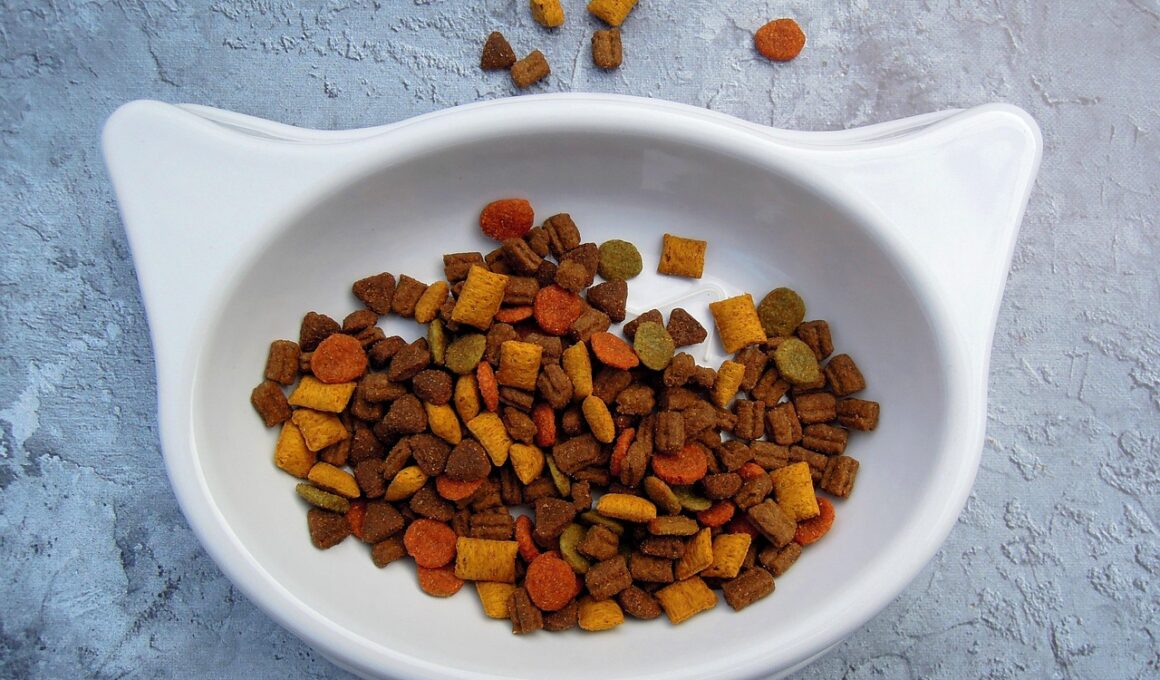Wet Food vs. Dry Food: What’s Best for Your Cat?
Choosing the right diet for your cat is crucial for its overall health. Many pet owners wonder whether to feed their feline friends wet food, dry food, or a combination of both. Understanding the benefits and drawbacks of each option can help you make an informed decision. Wet food, for instance, contains high moisture content, which aids hydration. This is particularly beneficial for cats, as they often do not drink enough water. Hill’s® Science Diet® offers a variety of wet cat food options enriched with vitamins that cater to specific health needs. On the other hand, dry food is more energy-dense and can be more convenient to store. It also promotes dental health by reducing plaque. When considering the right choice for your cat, factors such as age, health condition, and taste preferences must be taken into account. There is no one-size-fits-all solution; it often varies depending on your pet’s unique needs. Consulting your veterinarian can provide personalized recommendations based on your cat’s health and lifestyle.
Benefits of Wet Food
Wet food presents several advantages for your cat that can positively affect its well-being. One of the primary benefits is its high moisture content, which significantly helps maintain hydration. Cats, being evolved from desert-dwelling ancestors, often have a low thirst drive. Thus, incorporating wet food into their diet increases fluid intake. This is vital for kidney health and urinary tract function. Furthermore, wet food tends to be more palatable. Cats often find wet meals more enticing, especially those picky eaters. Some brands, like Wellness® and Blue Buffalo®, offer gourmet flavors that appeal to even the fussiest cats. Wet food is also generally easier to chew, making it suitable for older cats or those with dental issues. Additionally, a diet rich in protein from high-quality sources found in many wet foods can support muscle health and energy levels. Remember to choose wet food without artificial additives or fillers for maximum health benefits. This way, you ensure that your cat gets a diet that is both delicious and nutritious.
On the flip side, there are notable advantages to feeding your cat dry food. It tends to be more cost-effective compared to wet food, allowing you to supply larger quantities over time. This economical solution is particularly useful for multi-cat households. Moreover, dry food can be left out for extended periods without spoiling, making it convenient for busy pet owners. It also provides a crunchy texture that can aid in dental health by reducing plaque buildup. Some brands like Royal Canin® create specialized kibble designed to further support oral hygiene. However, it is crucial to ensure that the dry food you select is high in protein and low in carbohydrates. Unlike wet food, dry food lacks moisture, making it essential to provide plenty of fresh water. A balanced approach might include a combination of both wet and dry food, giving your fur baby variety while meeting nutritional needs. Always consult with your veterinarian to design a feeding plan tailored specifically to the individual requirements of your cat.
Potential Drawbacks of Each Type
While both wet and dry food have their merits, they also come with potential drawbacks. For wet food, the most significant concern is its tendency to spoil quickly after opening. If not properly stored, wet food can lead to bacterial growth, posing health risks to your cat. Additionally, wet food can be more expensive over time, making it less feasible for some owners on a tight budget. It’s essential to watch for signs of spoilage and store it properly in the refrigerator. Alternatively, dry food can sometimes contain fillers and low-quality ingredients if not carefully chosen. Always look for brands with high protein content from real meat sources. Some cats may also develop a preference for dry food, leading to hydration issues if they don’t drink enough water. It can result in urinary problems, especially in males. Another potential drawback is the higher calorie count some brands have, which can lead to obesity. Monitoring your cat’s weight and consulting with a veterinarian can assist in managing any weight concerns.
When transitioning your cat from one type of food to another, it’s best to do it gradually. Sudden changes in diet may upset their stomach or lead to other digestive issues. Introduce the new food slowly by mixing it with their old diet over a period of about a week. Start with a small ratio of new food, and gradually increase it while decreasing the old food. This method allows your cat to adjust without digestive strain. Regardless of whether you choose wet, dry, or a mix of both, monitor your cat’s responses and preferences. Pay attention to their stool quality, energy levels, and overall health. Incorporate variety to keep mealtimes interesting, as cats can quickly become bored with the same flavors. Additionally, offering different textures can enhance their eating experience. Understanding your cat’s dietary needs and behaviors is pivotal. Tools like a cat food diary can help track your cat’s reactions toward different foods, simplifying the selection process for you.
Final Thoughts on Choosing Between Wet and Dry Food
In conclusion, the choice between wet and dry food is not straightforward and requires thoughtful consideration. Each type has unique benefits that can suit different cats and lifestyles. Assess your cat’s specific needs, including its age, activity level, and health. If possible, a combination of both wet and dry food can harness the advantages of each, ensuring a balanced nutritional profile. Remember also to read labels carefully, focusing on ingredients that uphold your pet’s health. Trustworthy brands will typically offer better nutrition compared to generic options. Consulting with a veterinarian is always recommended; they can help determine which diet best supports your cat’s well-being. In some cases, there may be additional considerations such as allergies or medical conditions that necessitate dietary adjustments. Proper feeding can greatly enhance the quality of life for your pet. Make mealtime enjoyable and healthy, keeping in mind their natural behaviors and preferences. Taking these steps can ensure your feline friend lives a happy and healthy life.
Ultimately, cat parenting encompasses more than just feeding; it’s about understanding their needs. Observing your cat’s behavior and reactions to different foods can provide insight into their preferences. Besides diet, factors like playtime, mental stimulation, and regular vet visits contribute to overall well-being. You may even consider preparing homemade meals to guarantee premium ingredients and tailored nutrition. Each cat is distinct and may require distinct approaches to feeding and care. Create a feeding routine that aligns with your lifestyle while meeting your pet’s dietary needs. Regularly changing their food can also keep diet boredom at bay. Whether you choose wet or dry food, listen to your cat’s cues. It might take time, but nurturing a tailored feeding routine makes a world of difference. Remember the importance of a balanced diet and the impact it has on your cat’s longevity and happiness. With patience and continual adjustment, you can find the perfect balance that keeps your kitty thriving.
Images can be important visual aids, especially when dealing with diet and nutrition. Including photos of wet and dry food options may help illustrate the types of meals you could consider for your cat. You might find that an image of a satisfied cat enjoying its meal emphasizes the pleasure and joy that comes with the right diet. Engaging visuals can act as an additional tool in your online research for pet food. Brands often showcase real cats enjoying their meals, which can influence your choices. In your search for cat foods, look for detailed descriptions alongside images to understand better what you are offering your furry friend. It’s vital to not only consider ingredients but also the aesthetic indicators of quality. Your cat deserves a delightful eating experience, and sometimes pictures speak louder than words. Therefore, utilize every available resource as you navigate the world of cat nutrition. Empower yourself and your furry companion with the knowledge you need to ensure a happy feeding time.


